Imagine typing a sentence and watching it transform into a professional-quality video clip. That's exactly what Google's Veo 3 does. This groundbreaking AI tool is changing how we think about video creation, making it possible to generate stunning, realistic video scenes from simple text descriptions.
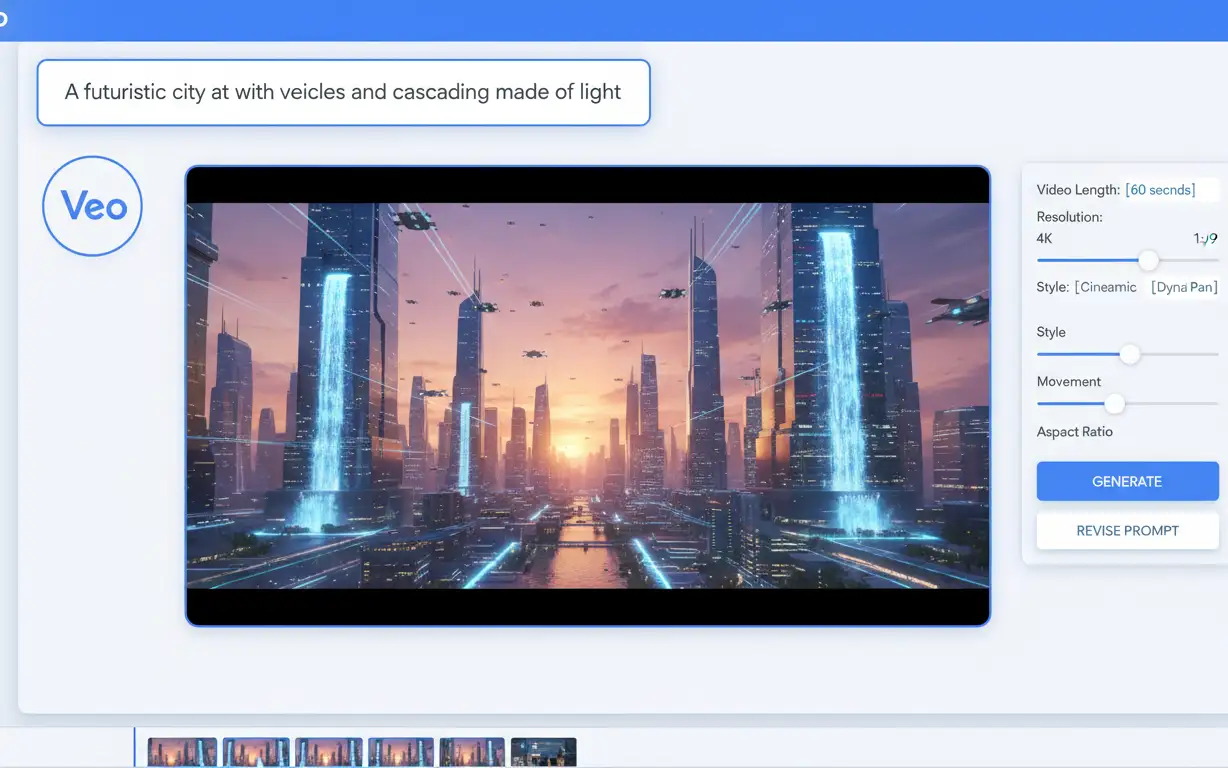
In this article, we'll break down exactly how Veo 3 works, what makes it special, and how you can use it to create amazing video content. Whether you're a content creator, marketer, or just curious about AI technology, this guide will help you understand everything about Google's impressive video generation tool.
What Is Google Veo 3 and Why Does It Matter?
Google Veo 3 is an artificial intelligence system that creates videos from text descriptions. Think of it as having a professional film crew inside your computer, ready to shoot any scene you can imagine—without cameras, actors, or sets.
Unlike earlier AI video tools that produced shaky, unrealistic clips, Veo 3 generates videos that look surprisingly real. The lighting appears natural, objects move correctly, and scenes flow smoothly from one moment to the next. This isn't just a fun experiment—it's a tool that's already changing how professionals create video content.

What makes Veo 3 truly special is how it understands not just what you want to see, but how you want to see it. You can specify camera angles, lighting conditions, and even the style of cinematography. Want a dramatic sunset with a slow zoom? A fast-paced action sequence? A peaceful nature scene? Veo 3 can create all of these and more.
The Magic Behind Veo 3: How It Actually Works
You don't need to be a tech expert to use Veo 3, but understanding how it works helps you get better results. At its core, Veo 3 uses something called a "diffusion model"—a type of AI that learns by studying millions of real videos.
Understanding the Learning Process
Think of it like this: Imagine someone watching thousands of movies and learning everything about how cameras move, how light bounces off objects, and how scenes flow together. That's essentially what Veo 3 did during its training. Google's team fed it countless hours of video footage, and the AI learned patterns about how the real world looks and moves.
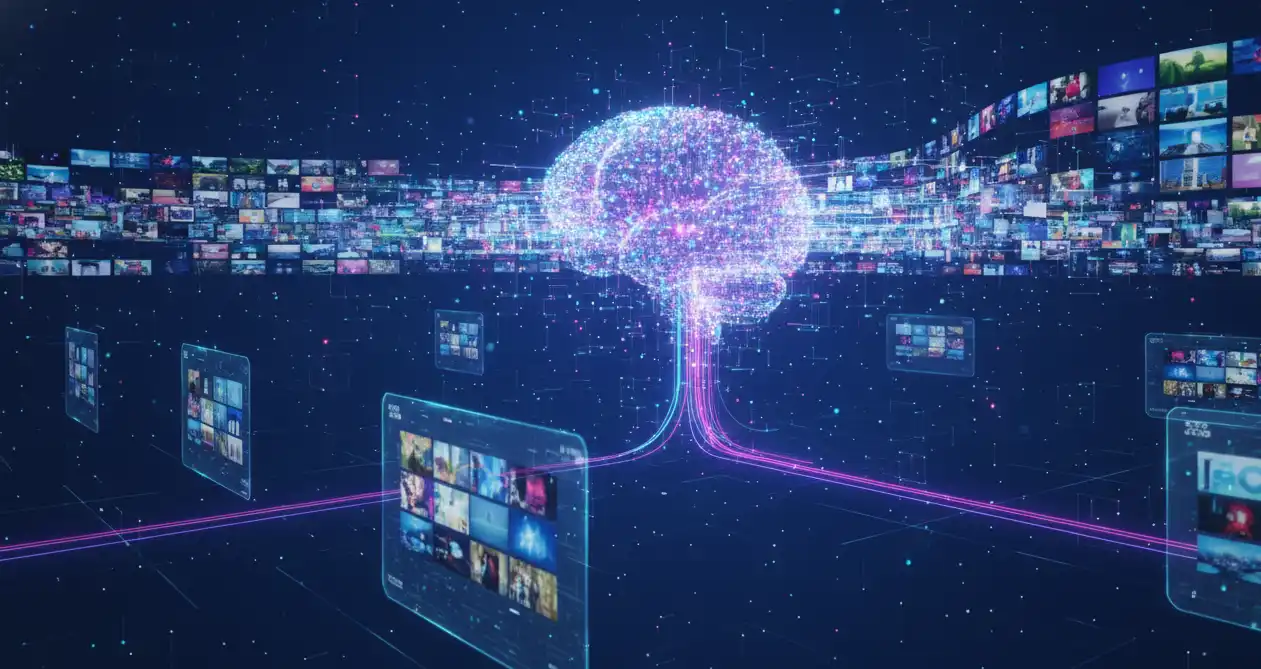
But here's what makes Veo 3 different from older AI tools: it doesn't just understand individual frames like a photograph. It understands time and motion. It knows that if a person starts walking in one frame, they should continue that movement naturally in the next frame. If a ball is thrown, it should follow realistic physics as it flies through the air.
Frame-by-Frame Consistency: The Biggest Challenge
One of the hardest problems in AI video generation is keeping things consistent. Earlier AI tools might create a person wearing a red shirt in one frame, but then the shirt would randomly change to blue in the next frame. Objects would morph or disappear. Movements looked jumpy and unnatural.
Veo 3 solves this problem through advanced temporal understanding. It tracks objects across frames, maintains their appearance, and ensures smooth transitions. When you generate a video of someone walking down a street, they stay the same person throughout the entire clip. The buildings don't shift around randomly. The lighting changes gradually, just like it would in real life.
Key Features That Make Veo 3 Stand Out
Professional Cinematography Control
What truly sets Veo 3 apart is how much control you have over the final video. You're not just describing what happens in the scene—you're also directing how it's filmed. You can specify camera movements like "slow dolly zoom," "handheld shaky cam," or "smooth aerial drone shot rising upward." These aren't just fancy terms—they dramatically affect the mood and feel of your video.
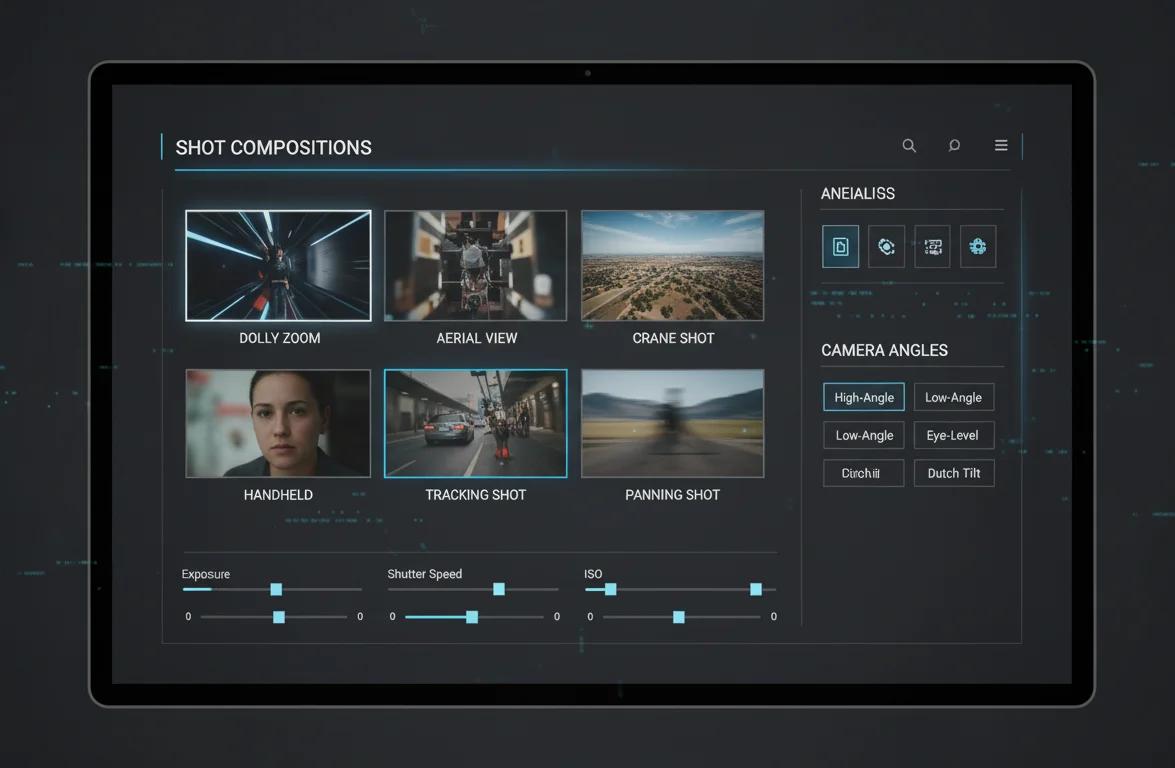
For example, a handheld camera style makes your video feel intimate and documentary-like, while a smooth crane shot creates a cinematic, professional feel. This level of control means you can match the video style to your specific needs, whether you're creating content for social media, advertising, or film production.
Realistic Lighting and Physics
Lighting is one of those things that seems simple until you try to fake it. Veo 3 understands how light works in the real world. If you ask for a sunset scene, the light will be warm and golden, casting long shadows. Indoor scenes have different lighting characteristics than outdoor ones. Reflective surfaces actually reflect light properly.
The physics simulation is equally impressive. Water flows realistically. Fabric moves and drapes naturally. When objects collide or interact, they behave the way you'd expect them to in real life. This attention to physical accuracy makes Veo 3's videos feel genuine rather than artificial.
Extended Video Duration
While many AI video generators can only create clips lasting a few seconds, Veo 3 can generate longer sequences while maintaining quality and consistency. This is crucial for practical applications where you need more than just a brief glimpse of a scene. You can create narrative sequences that actually tell a story, not just disconnected moments.
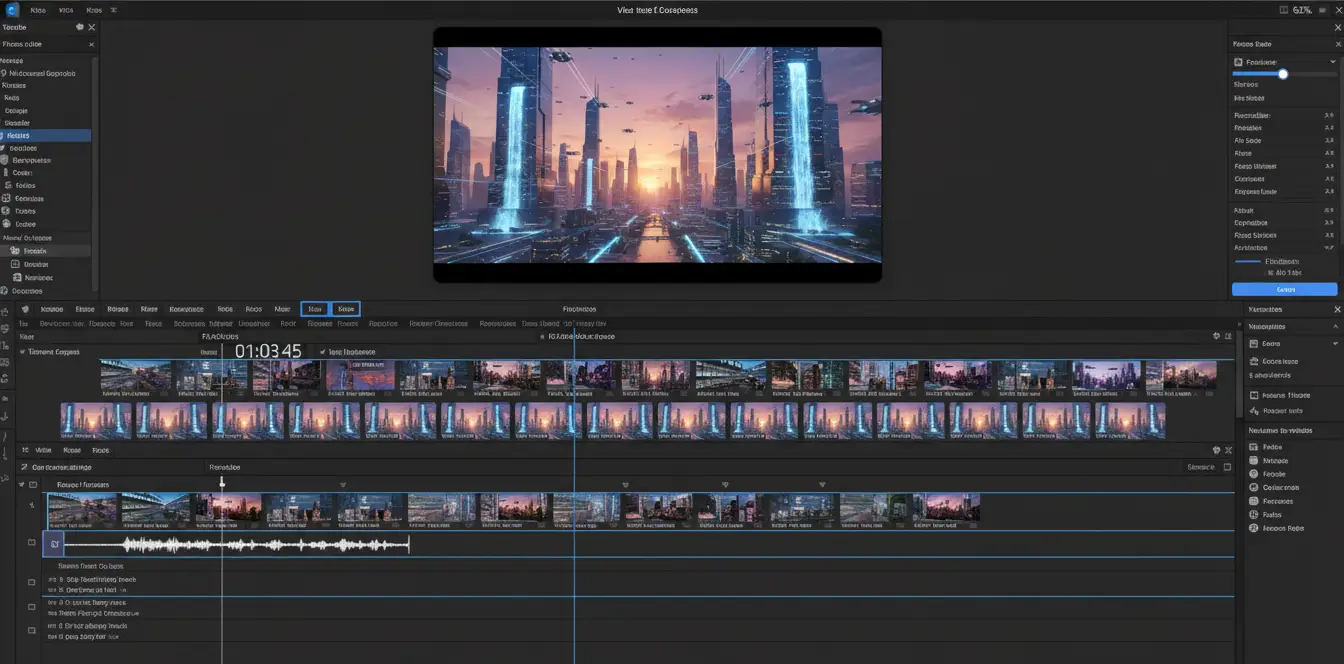
Real-World Uses: How People Are Using Veo 3
Content Creation for Social Media
Social media creators are using Veo 3 to generate eye-catching B-roll footage that would be expensive or impossible to film traditionally. Need shots of exotic locations for your travel content but can't afford to fly there? Veo 3 can create convincing establishing shots. Want to show a product in various settings without setting up multiple photo shoots? Generate them with text prompts.
Marketing and Advertising
Marketing teams are discovering that Veo 3 is perfect for creating concept videos and testing ideas before committing to expensive production. You can generate multiple versions of an ad concept in minutes, show them to clients or test audiences, and refine your approach before filming anything in real life. This saves enormous amounts of time and money during the creative process.
Film and Video Pre-Production
Film directors and cinematographers are using Veo 3 for pre-visualization—creating rough versions of scenes to plan camera angles, lighting, and movement before the actual shoot. This helps the entire crew understand the director's vision and solve potential problems before expensive camera equipment and actors are involved.
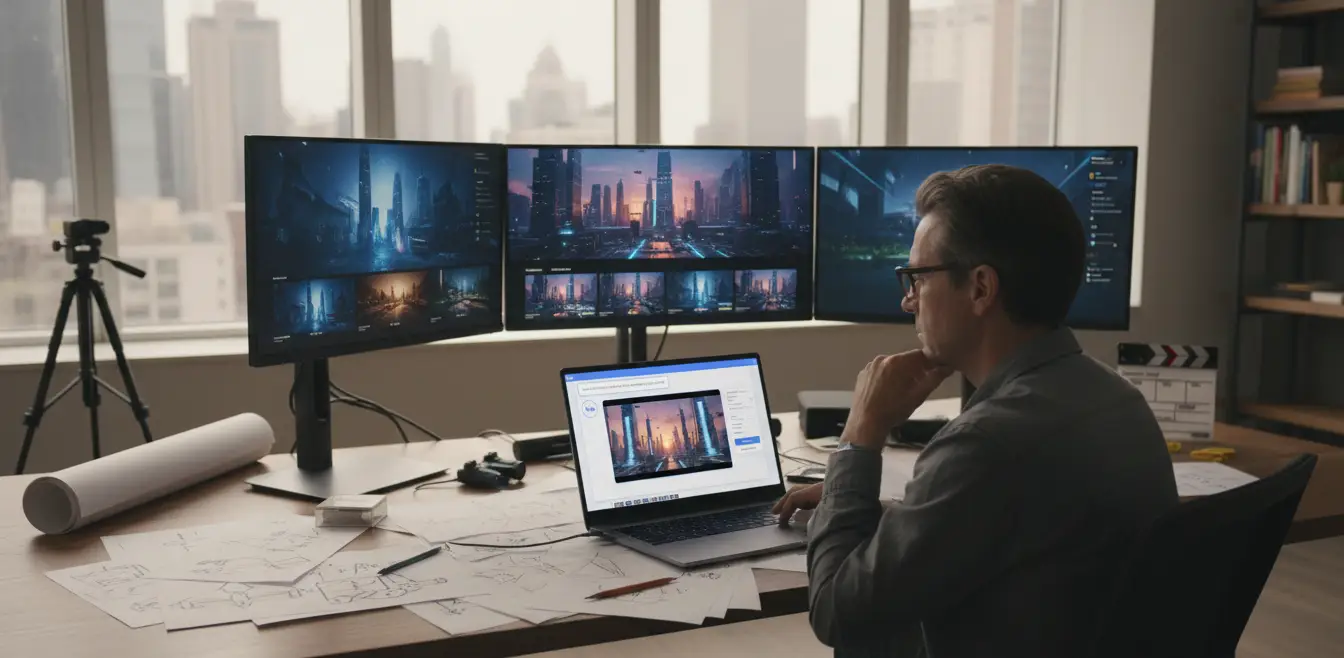
Educational Content
Teachers and educational content creators are using Veo 3 to create visual explanations of concepts that are difficult to film in reality. Historical events, scientific processes, or abstract ideas can be visualized in ways that help students understand complex topics. The ability to generate custom video content means educators aren't limited to existing stock footage that might not perfectly illustrate their point.
Creating Impossible Shots
Some of the most exciting uses of Veo 3 involve creating shots that would be dangerous, impossible, or prohibitively expensive to film in real life. Want a camera to fly through the inside of a volcano? Capture the perspective of a falling raindrop? Show a city from a bird's eye view that sweeps between buildings? Veo 3 makes these imaginative shots possible without risking anyone's safety or breaking the budget.
Getting the Best Results: Tips for Using Veo 3
Write Detailed Prompts
The quality of your video depends heavily on the quality of your text description. Instead of writing "a person walking," try "a young woman in a red coat walking slowly down a rainy city street at dusk, shot from a low angle with shallow depth of field, cinematic lighting." The more specific details you provide, the better Veo 3 can understand and create your vision.
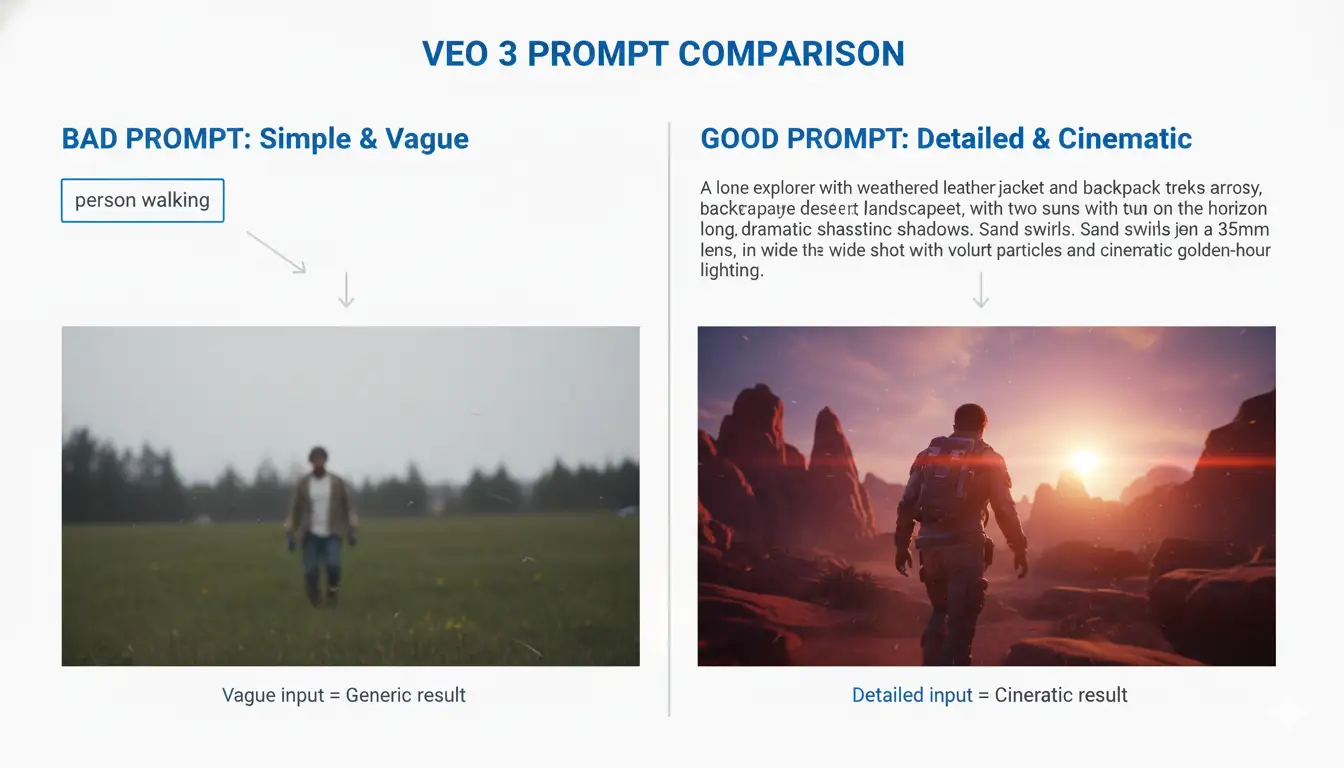
Include information about the setting, time of day, weather, lighting style, camera movement, subject actions, and the mood you want to convey. Think of yourself as writing shot directions for a film crew—the more information you provide, the better they can execute your vision.
Specify Camera and Cinematography
Don't forget to describe how you want the scene filmed, not just what's in the scene. Terms like "wide-angle shot," "close-up," "tracking shot," "overhead view," or "dutch angle" tell Veo 3 exactly how to frame and move the camera. This is where understanding basic cinematography terms really helps, but even simple descriptions like "camera slowly moving closer" or "view from above" work well.
Experiment and Iterate
Your first attempt might not be perfect, and that's okay. Veo 3 is a tool that rewards experimentation. Try different phrasings, adjust your descriptions, and generate multiple versions. Sometimes small changes in how you describe something can lead to dramatically different (and better) results.
Current Limitations You Should Know About
While Veo 3 is impressive, it's not perfect. Understanding its limitations helps you use it more effectively and set realistic expectations.
Duration Constraints
Currently, Veo 3 works best with shorter clips. While it can generate videos longer than many competitors, you're still limited to around two minutes or less. For longer content, you'll need to generate multiple clips and edit them together, which requires traditional video editing skills.
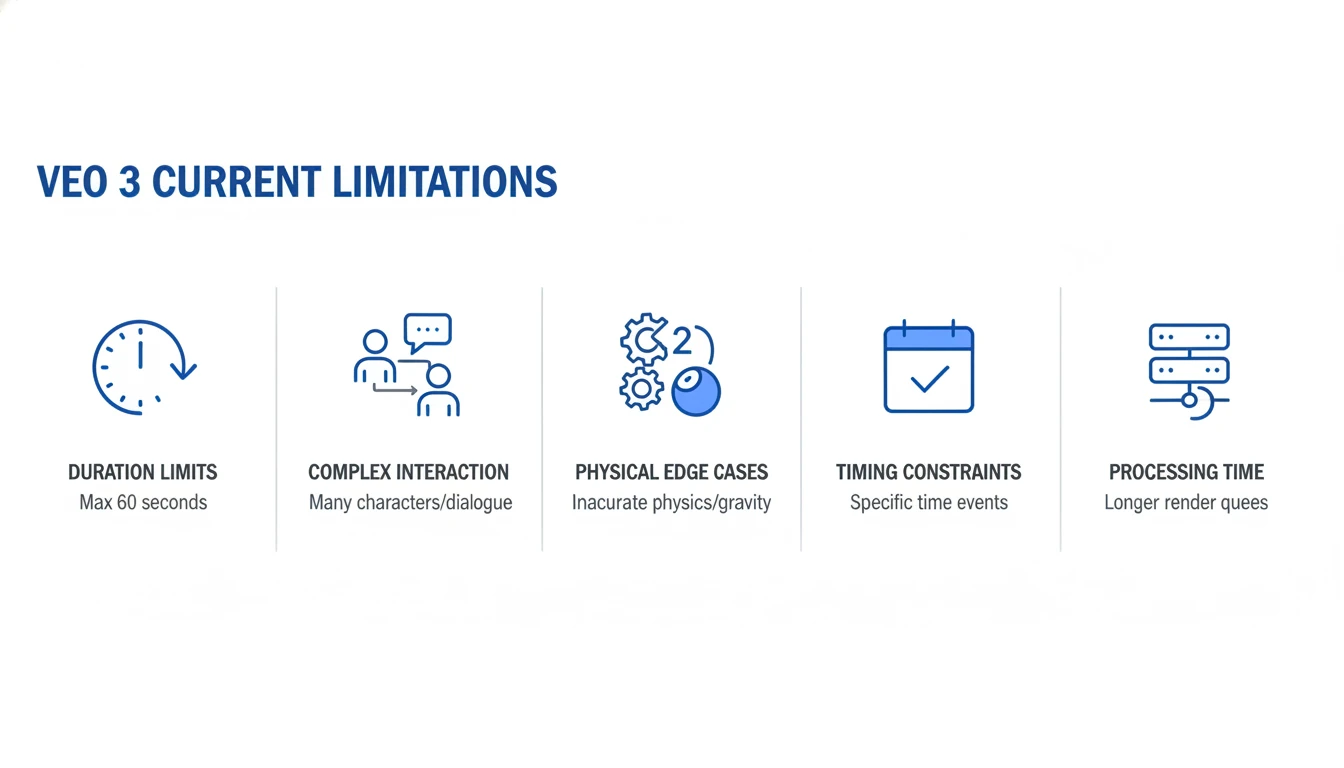
Complex Interactions
Scenes involving multiple people having detailed interactions can still be challenging. While Veo 3 handles individual subjects well, coordinating complex choreography between multiple characters or objects sometimes produces inconsistent results. Simple interactions work fine, but elaborate sequences might need multiple attempts or traditional filming methods.
Physics Edge Cases
While Veo 3's physics simulation is generally excellent, it can occasionally produce impossible movements or interactions, especially with unusual objects or situations it didn't encounter frequently during training. Water, fire, and other fluid dynamics are getting better but aren't always perfect.
Specific Timing Requirements
If you need something to happen at exactly a specific moment in your video—like an object appearing at the 3.5-second mark—Veo 3 doesn't yet offer that level of precise temporal control. It understands sequences and flow, but not exact timing down to the frame.
Processing Time and Resources
Generating high-quality video requires significant computing power. Unlike typing a prompt into a text AI and getting instant results, video generation takes time. Depending on the complexity and length of your request, you might wait several minutes for your video to generate. This is normal and simply reflects the enormous computational work happening behind the scenes.
The Future of AI Video Generation
Veo 3 represents where we are today, but the technology is evolving rapidly. Future versions will likely offer longer durations, better handling of complex scenes, more precise control over timing and editing, and faster generation speeds. We're probably only a few years away from AI that can generate feature-length films from scripts.
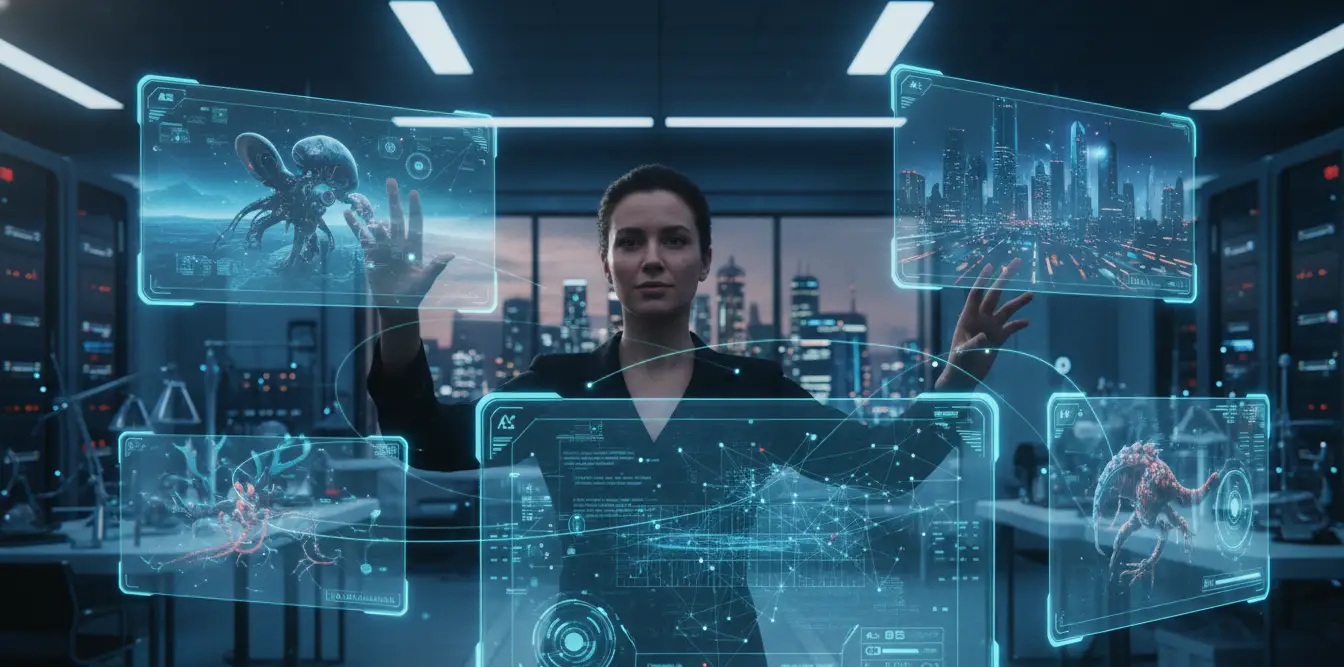
This doesn't mean human creativity becomes obsolete—quite the opposite. Tools like Veo 3 are empowering creators to realize visions that would have been impossible or unaffordable before. The bottleneck shifts from technical execution to creative imagination. The question becomes not "Can we create this?" but "What do we want to create?"
Should You Start Using Veo 3?
If you create video content regularly, Veo 3 is worth exploring. It won't replace traditional filming for everything, but it's an incredibly powerful tool for specific use cases. Think of it as adding a new instrument to your creative toolkit rather than replacing everything you already use.
For marketers testing concepts, educators explaining ideas, or content creators needing B-roll, Veo 3 can save enormous amounts of time and money. For filmmakers and video professionals, it's a powerful pre-visualization tool that helps communicate creative visions.
Final Thoughts
Google Veo 3 represents a significant leap forward in AI video generation technology. It's not just a novelty—it's a practical tool that's already changing how professionals approach video creation. The ability to generate realistic, cinematic video from text descriptions opens up creative possibilities that simply didn't exist before.
While it has limitations, understanding both its strengths and constraints helps you use it effectively. As the technology continues to improve, the gap between AI-generated and traditionally filmed content will keep shrinking. But rather than replacing human creativity, tools like Veo 3 amplify it, making it possible for more people to bring their creative visions to life.
The future of video creation is here, and it's more accessible than ever. Whether you're a professional filmmaker or someone with creative ideas but no filming equipment, Veo 3 offers a glimpse into a world where the only limit to video creation is your imagination.
